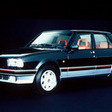You can login to your account or create a new account.
You can login to your account or create a new account.
You can login to your account or create a new account.
The Italian automaker Alfa Romeo was founded in 1910, although its roots precede that date. It was actually in 1906, when Milanese aristocrat Cavaliere Ugo Stella and French car manufacturer Alexandre Darracq combined efforts to build an automobile plant, that the Darracq Italiana, former Alfa Romeo company, was established in Naples. Later that year, headquarters of the company were moved to the city of Milan.
However, soon after the company was born and started producing Darracq cars, partnership between Stella and Darracq was broken and the assembly line was moved to an ancient disabled plant in Portello, a suburb of Milan. The new factory, inaugurated in 1910, was called ALFA, which stands for “Anonima Lombada Fabbrica Automobili”, meaning “Lombard Automobile Factory, Public Company”. In that same year, the first Alfa car was finally launched, the 24 HP, having been created by chief-designer Giuseppe Merosi.
Alfa didn’t take too long to start participating in racing competitions, such as the 1911 Targa Florio. Nevertheless, the outburst of the first World War forced the plant to paralyze car production for three years. Then, in 1916, Nicola Romeo took over the company’s direction and adapted it into a war-purpose factory, building things like aircraft engines, artillery and other pieces, in order to serve Italy and the Allies in wartime.
Romeo remained on the direction chair of Alfa, even after the War ended, and car manufacture was restored in 1919.
In the following year, 1920, the company finally adopted the current ‘Alfa Romeo’ trade name. The Torpedo 20/30 HP would be the first ever Alfa Romeo-badged automobile. Good-quality road cars and successful race cars would be built by the brand over the following years. However, the company experienced bankruptcy in 1928 and it wouldn’t be until 1933 that the Italian government would take over Alfa Romeo and reopen gates, as the company became a Nacionalist Symbol for the Italy of Mussolini.
Throughout the Second World War, the Alfa Romeo plant was fairly bombed and barely managed to restart car production and profits at the end of the conflict. As a result, the brand no longer defined itself as a luxury car producer, but rather as a mass production builder of popular vehicles. Alfa Romeo even became popular, in the 60’s, for its small cars and purposely-designed models for the Italian police.
After some financial difficulties, the Italian government decided to sell the automaker to another Italian car brand, the Fiat, in 1986, and Alfa Romeo was back again a private company. After having been bought by Fiat, the Alfa Romeo cars were no longer distinguished amongst the other brands for their traditional engineering systems (longitudinally mounted engines, rear-wheel drive), as Fiat’s cost-cut policy forced the Milanese company to adopt their uniformed chassis and engineering processes.
As soon as the automaker ALFA was founded, in 1910, designer Romano Cattaneo was given the task of creating a symbol for the Milanese car factory. Inspired by the antique Visconti family’s coat of arms, which included a serpent on a blue background, and by Milan city emblem’s red cross over a white background, Cattaneo originated the logo that integrates those elements surrounded by a dark blue ring. On such ring, the words “ALFA” and “MILANO” were engraved, separated by two Savoy dynasty knots, which bond with the ancient traditions of the Italian kingdom. The emblem would remain in its original shape until around 1918.
After Nicola Romeo bought the ALFA factory and decided to upgrade the trade name to “Alfa-Romeo”, the brand’s logo had to be redesigned as well. Therefore, the word “ROMEO” was added to the emblem’s “ALFA” inscription, resulting on “ALFA-ROMEO”, but the rest of the elements were kept. Only in 1946 the Savoy knots were removed and two subtly curved lines replaced them.
In the early 1970’s, when the new Alfa Romeo plant was set in Naples, the word “MILANO” from the bottom half of the circle, as well as the hyphen between “Alfa” and “Romeo”, were also removed from the badge, and it has stayed that way up to today.
The Alfa Romeo brand has been competing in several motor sport events ever since its first years of existence, as both engine supplier and constructor. Great successes were achieved at prestigious race events, namely at the Le Mans, Mille Miglia and Targa Florio, amongst many others. Alfa Romeo has also successfully competed in Formula 1, several touring car and sports car races, rallies and prototype competitions.
Upon being inaugurated, the ALFA car brand began racing at the 1911 season of the Targa Florio, with racers Nino Franchini and Ronzoni at the wheel of two 24 HP. Two years later, ALFA built the first real racing car – the 40-60 HP, which Franchini drove at the Parma-Poggio Berceto, finishing second. The same car made it to first place at the Mugello race in 1920 and 1921, thanks to driver Giuseppe Campari. Then an RL model, driven by Ugo Sivocci, won the 1923 Targa Florio.
Alfa Romeo also took first place at the first ever Automobile World Championship, which took place in 1925. That year, the Alfa Romeo P2 also won the Italian Grand Prix at Monza and the European Grand Prix at Spa. The P3 model was built in 1932 by Vittorio Jano and then Tazio Nuvolari took the Italian Grand Prix with it. The P3 finished first at other five Grand Prix races as well, that year. The following year, driver Louis Chiron claimed victory for Alfa Romeo at the French Grand Prix, while Tazio Nuvolari did the same at the German Grand Prix in Nürburgring, both with an Alfa Romeo P3.
The 1930’s were extremely glorious years for the Italian car brand. The Alfa Romeo team won every Mille Miglia race from 1928 to 1938, except for the 1931 edition. The 8C 2900B Corto Spyder model in which driver Biondetti won the 1938 Mille Miglia became afterwards referred to as “the Mille Miglia model”.
Also in the 1930’s, the brand took six consecutive Targa Florio races. They also won all 24 Hours of Le Mans competitions from 1931 to 1934 with the 8C 2300 model. Nuvolari claimed victory for the brand at the 1935 German Grand Prix.
Between 1950 and 1988, Alfa Romeo was involved in Formula One, both as a constructor and an engine supplier, winning the first two seasons of this competition’s world championship with the Alfetta model. In spite of the success, the brand left the competition once the 1951 season ended.<
Some Alfa Romeo cars have also been brought into rally competitions, where they achieved a rather moderate success. Most of them are raced by private teams. The Alfa Romeo Giulietta took first place at the 1958 Finland Rally.
Alfa Romeo sets its racing department, Autodelta, in 1963 and starts racing at the World Sports Car Championship in 1967, taking first place in 1975 and 1977. They abandoned this competition by the end of 1977. Alongside, the brand won many other touring car series within that period of time. They won all the European Touring Car Championship editions from 1966 to 1968 with the Alfa Romeo GTA, and also the 1970 and 1971 seasons with the GTAm model. Alfa Romeo won the title again for four years in a row, from 1982 to 1985. They took first place as well at the 1983 and 1994 seasons of the British Touring Car Championship.
While being involved in Formula 1 as a constructor (until 1985), Alfa Romeo was also supplying engines to Formula 3 cars, allowing them to perform five consecutive victories, from 1980 to 1984. Many European titles and cups, as well as national championship titles allowed for Alfa Romeo to carry on with a great amount of success.
The Italian car brand was also responsible for supplying engines to IndyCar World Series cars, which they did between 1989 and 1991.
The Alfa Romeo 156 brought back some of the brand’s success in the European Touring Car Championship by winning the race for four consecutive years – 2000 to 2003.





















